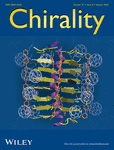Special Issue:
Design and synthesis of high performing energetic materials
In material science, high energy materials (HEMs) are among the most essential functional substances and are widely utilized for various military and civilian purposes. HEMs are designed to store enormous amounts of energy in the chemical structure in a condensed phase releasing rapidly (in the case of an explosive) or gradually (in the case of propellants) and exerting abrupt change in heat-pressure on the surroundings. Since the discovery of black powder and the subsequent development of nitroglycerine, nitrocellulose, TNT, TATB, RDX, HMX, CL-20, etc., the demand for new materials has increased with desired properties for civil, defence, and space exploration programs.
HEMs with specific and modifiable physicochemical and energetic properties are essential for their precise applications. New HEMs with tunable performance and safety have been the subject of an extensive investigation by researchers worldwide. Some of the present challenges in the field of HEMs are (i) Demand for green energetic materials with nitrogen-rich heterocyclic backbone as a replacement for TNT, RDX and HMX since they produce an enormous amount of toxic gases (CO and CO2) on detonation. (ii) Insensitivity towards heat, impact, friction, and electrostatic discharge is an essential and fate-deciding parameter for HEMs. (iii) Development of higher-performing melt-castable ingredients that are more energetic than TNT and DNAN. (iv) Combining high performance with less sensitivity i.e., minimizing energy-safety contradiction.
The heterocyclic backbone plays an excellent role in the design and synthesis of HEMs. Developing new and convenient synthetic routes, high energy-safety balance, and environmentally benign nature has tremendous value to the wider materials community.
Keywords: energetic materials, heterocyclic compounds, azoles, explosives, propellants, azines.
Submission is open now: You can submit your paper via the journal's main page - just choose "Design and synthesis of high performing energetic materials" from the drop-down in the final submission step. Authors are encouraged to submit Reviews/Minireviews and original Research Articles.
Submission Deadline: 30 June 2024








